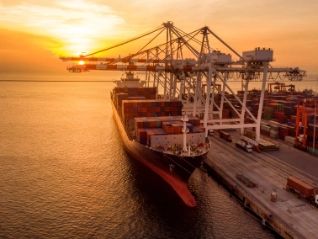
Het laatste nieuws en persberichten

Bekijk onze rapporten

Lees testimonials van onze klanten
The President promised the return of millions of factory jobs, but rising investment pledges masks a mixed picture for US...


Een eeuw lang risicobeheer, kennisopbouw en vertrouwen

Nauwere banden kunnen de handel stimuleren en een werkbaar alternatief vormen voor de gebrekkige WTO. Maar kan...

Hoewel het akkoord voor opluchting zorgt, laten onuitgewerkte details en...

Atradius Syndicate 1864 will focus on trade credit risks, initially targeting new and...

Businesses face increasing supply chain risk as geopolitical tensions, tariffs and economic incentives...

Handelsoorlog zet economische vooruitzichten wereldwijd onder druk
Kijken op 7 van 49
Our survey of companies across Canada, Mexico and the US reveals that while trade credit use is expanding, businesses remain...


Looking for safe havens in a divided region

Tariffs and related uncertainty causing a large negative impact

In some markets the indirect impact of tariffs could dampen higher food spending

A temporary de-escalation in the US-China tariff dispute will support global electronics growth

The shock of US trade policy is unprecedented and is weighing on the global economic outlook.

Tariffs and related economic uncertainty weigh on commercial construction investment
Kijken op 7 van 161
After adopting Atradius trade credit insurance, MBS found that their credit control processes improved so much that staff had more time to devote to clients.
Lacto chose Atradius over all other trade credit insurance companies, due to the responsiveness of their Account Manager and the quality of communication.
Australian startup Ayonz partnered with us to build a robust risk management platform, enabling them to focus on their core business and enjoy growth.
After some experiences of bad debt, Vero Design describes how we provide them with peace of mind, allowing them to focus on fireplace production and sales.
Inheriting Atradius credit insurance after an acquisition enabled E.ON to benefit from our dedicated solution for multinationals.
French lighting designer, Corep, uses credit insurance to maximise opportunities for growth and enable favourable factoring terms to secure cash flow.
Understanding the unique challenges Covid-19 brought to the healthcare industry, Atradius supported Philips Capital’s sector financing solutions.
Kijken op 7 van 19

































